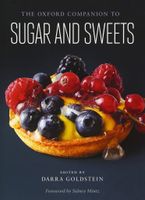Advertisement
Dia de los Muertos
Published 2015
In Mexico and Central America—where Catholic holidays combined with Aztec and Mayan traditions instead of Celtic—Halloween is seldom observed. Instead, Dia de los Muertos (Day of the Dead), a festival that combines commemoration of the dead with skull imagery, is celebrated on 2 November (although the festivities may begin on 31 October). The small sugar skull, made from a process known as alfeñique (in which items are molded from sugar paste), has become the primary symbol of Dia de los Muertos, although the skulls (which may be decorated with sequins and other inedible objects) are seldom consumed. Pan de muerto, or “bread of the dead,” is a simple sweet bread (sometimes anise seed is added), which may be baked in the shape of bones or even a corpse, and is eaten as part of the festival, often at the graveside of a loved one. See day of the dead.


